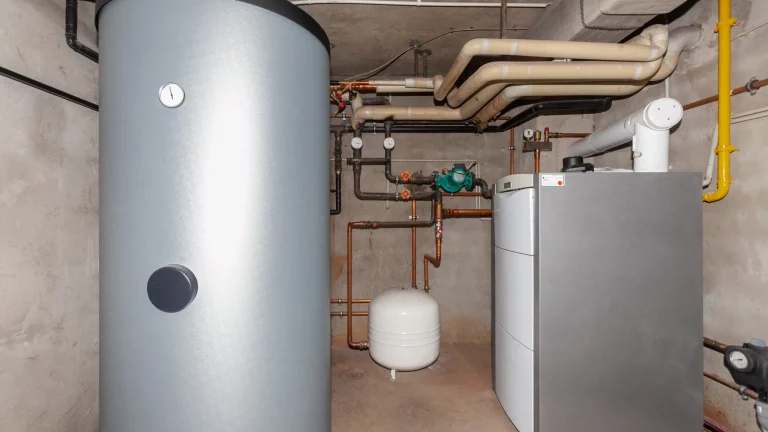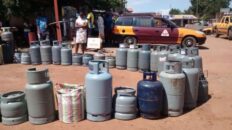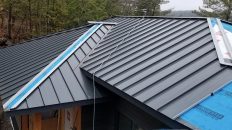How Much Does a Furnace Cost in 2023.
If you need to repair or replace your furnace and are wondering about general furnace costs, keep reading for a detailed look at furnace types, pricing factors to consider, and common repair costs.
Unless you’ve installed a heat pump as your HVAC system, you likely have a furnace that blows hot air through the ducts and vents of your house during the colder months. However, if your furnace breaks down, it can be challenging to determine if its better to repair or replace it and how much those two options cost.
The This Old House Reviews team researched the most common furnace costs and created a guide on how different types of furnaces work, how much they cost, and pricing factors to consider before buying a new furnace. After reading this guide, use the tool below to connect with a professional HVAC contractor near you and get an estimate on HVAC repairs or a replacement:
Types of Furnaces
Although most furnaces work in the same way, they have different fuel types. Keep reading to learn about the three most common types of furnaces on the market.
Natural Gas Furnace
Gas furnaces are the most common type of furnace. Although slightly more expensive than electric furnaces, new gas models are much more efficient, saving you money on your monthly energy bill. According to the U.S. Department of Energy (DOE), many modern, high-efficiency gas furnaces can reach a rating of up to 98.5% Annual Fuel Utilization Efficiency (AFUE), making them the cheapest to run and great for homeowners who live in cold climates.
If your home receives natural gas, a natural gas furnace may be your best option. If you want to spend less money upfront, purchase a mid-efficiency model with around 80%–88% AFUE. We found that the range of total costs for mid-efficiency or high-efficiency furnaces is generally near $1,700–$9,700 and includes the estimated installation rates.
Electric Furnace
Rather than burning fuel, electric furnaces use electrical currents to heat the air in the exchanger before distributing it throughout your ducts. Although they’re less efficient and more expensive to run than gas or oil furnaces, they’re better for the environment and have longer lifespans of 20 to 30 years. They’re also relatively cheap to purchase and install.
For eco-conscious homeowners who want a lower upfront furnace cost, an electric furnace could be a good option. It’s also a great alternative to gas or oil furnaces since it doesn’t require cleaning or other maintenance related to the ash or soot from burning fuel. As the cheapest option, electric furnaces usually cost between $1,600 and $6,200, which includes installation costs.
Oil Furnace
Although oil furnaces were popular in the early to mid-20th century, they have become much less common due to the availability and lower price of natural gas. However, if your home isn’t connected to natural gas and you want a furnace that will lower your energy bill more than electricity, consider an oil furnace. The oil furnace models that are produced today typically have efficiency ratings of around 80%–90%.
Keep in mind that the upfront costs for an oil furnace are typically higher than electric furnaces. Including labor and installation costs, you can expect the total cost of an oil furnace to be around $4,300–$9,200.
| Type | Unit Cost | Installation Cost |
|---|---|---|
| Natural Gas | $700–$6,200 | $1,000–$3,500 |
| Electric | $600–$2,700 | $1,000–$3,500 |
| Oil | $1,800–$3,200 | $2,500–$6,000 |
Cost of Furnaces Explained
Here are a few factors that affect the price of a furnace:
- Energy efficiency: Although the DOE declares 80% to be the lowest AFUE rating for new furnaces sold, most furnaces have a rating between 83% and 95%. The higher the energy efficiency rating, the lower the average annual energy costs. Furnaces with high AFUE ratings typically cost more upfront. For example, high-efficiency gas furnaces can generally be $700–$1,500 more than mid-efficiency models, but they can save you money in the long run by reducing monthly gas bills.
- Size: The size of a furnace is measured in British Thermal Units (BTU) to determine the amount of space it’s able to heat. Furnace sizes usually range from 40,000 to 120,000 BTU. In general, you can calculate the BTU for your house by multiplying the total square footage by 40, with colder areas needing slightly more BTU per square foot. The pricing for furnaces and installation increases depending on the BTU of the unit.
- Brand: Shopping for different brands is a great way to find the best deal on your furnace. Popular HVAC brands that sell furnaces include Goodman, Trane, and Lennox.
Installation: Installation and labor costs vary depending on your location, so getting quotes from a few local HVAC contractors ensures the best price. Additionally, if you’re still deciding on a furnace type and model, reaching out to an HVAC expert can help you determine which type of furnace makes the most sense for your home. - Tax credits: Purchasing a product with an Energy Star certification can qualify you for certain tax credits. Energy Star is an organization backed by the DOE and EPA to encourage the production and purchase of high-efficiency products, including furnaces. Homeowners who purchase an Energy Star-certified furnace with an AFUE rating of 95% or higher are eligible through December 31, 2021, for a $150 tax credit.
Common Furnace Repairs
Furnaces typically last 15 to 20 years, but if your furnace isn’t working properly, check to see if it can be repaired before paying for a new unit. You can enter your ZIP code into the tool below to connect with an HVAC contractor in your area. Additionally, if you’re located in North Carolina, Maryland, or Virginia, you can get a quote from Michael & Son for your furnace repair or replacement.
Here are a few common furnace repairs and their associated costs:
| Common Furnace Repair | Average Cost |
|---|---|
| Cracked heat exchanger | $2,000–$3,500 |
| Cleaning | $60–$80 |
| Filter change | $40–$150 |
| Damaged blower belt | $30–$110 |
| Broken thermostat | $100–$500 |
| Damaged blower bearings | $30–$150 |
Thanks for reading to learn “How Much Does a Furnace Cost in 2023“.







